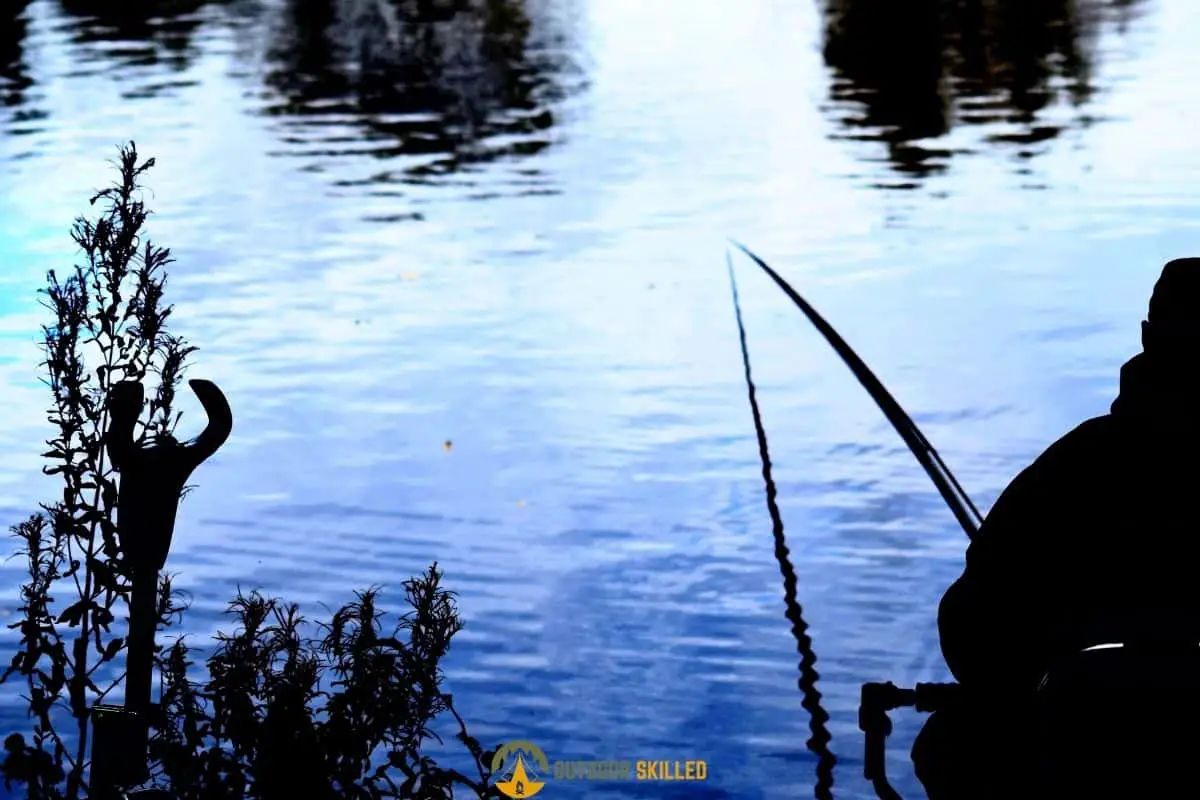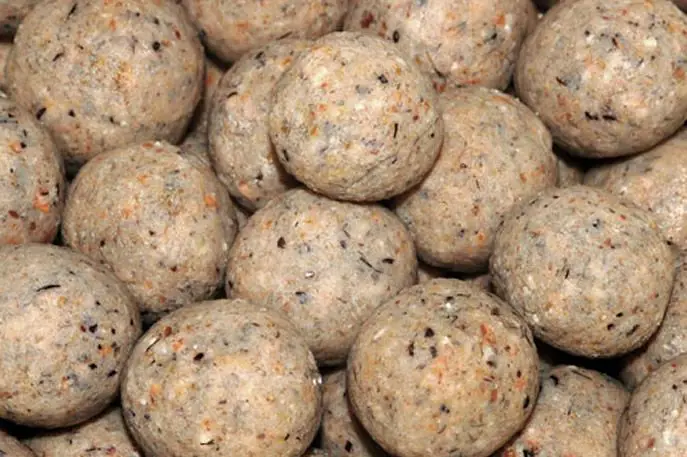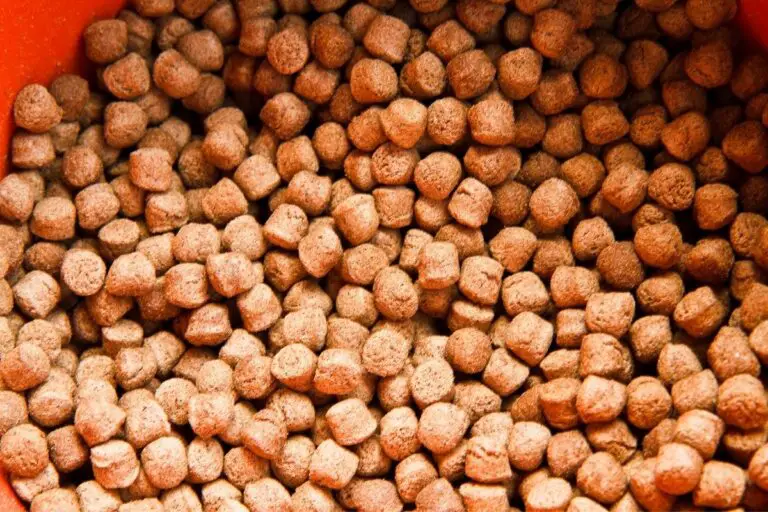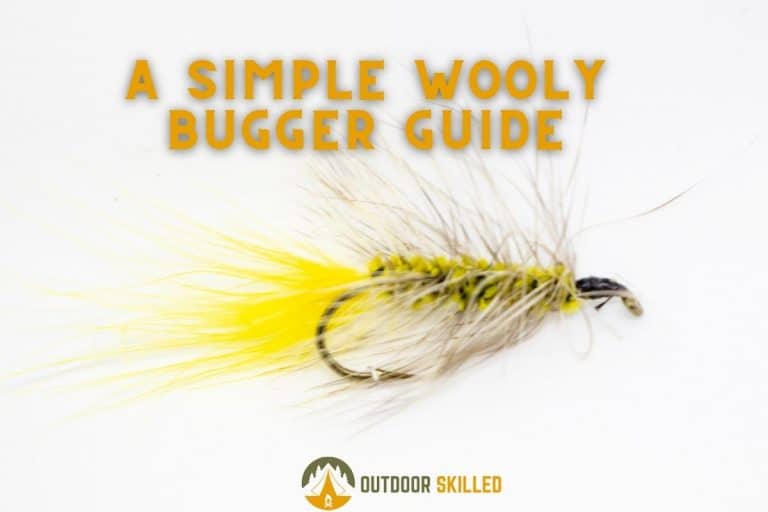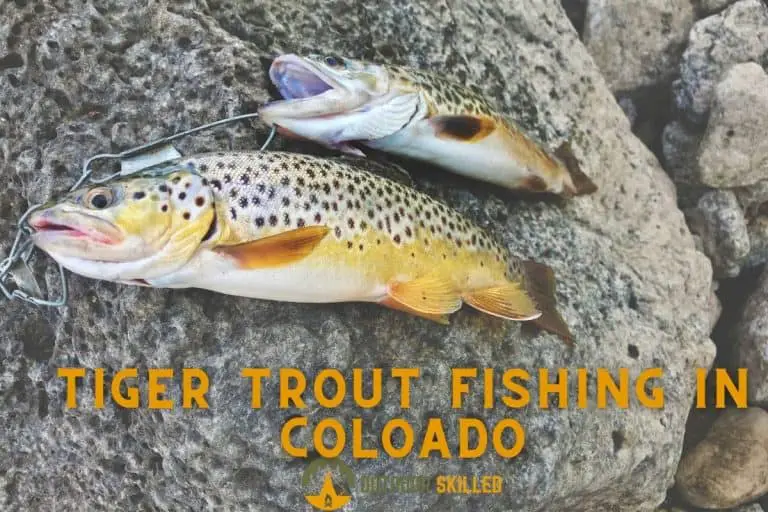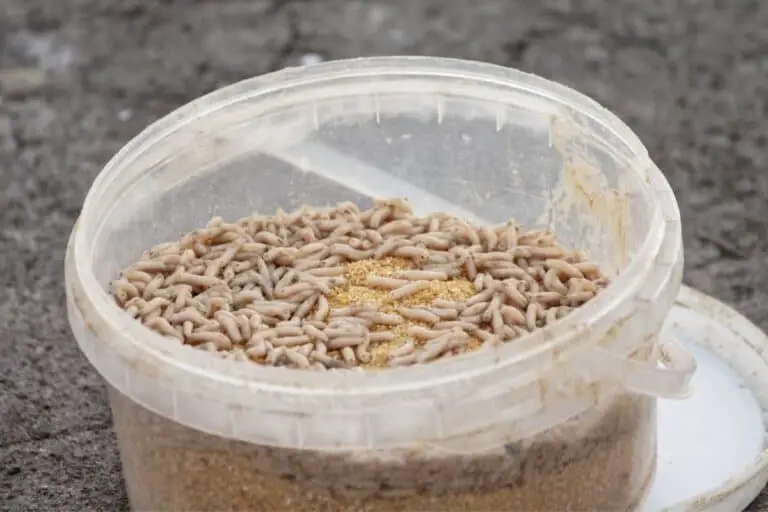A Guide to Trout Fishing at Night With Worms
It’s been widely tested by trout fans that some of the best hours of the day to catch trout are an hour before sunrise and an hour after sunset. Which makes the night a prime time too. It also gives you the benefit of quietness and less competition. What about using worms to draw trout at night?
Keep reading to know more about how to effectively fish for trout at night with worms.
Table of Contents
Trout Fishing at Night with worms

When To Fish for Trout At Night?
The first question is what’s trout behavior at night? Well, it’s enough to say that they come alive and more active during the night. They’ll escape the sun and heat of the day hiding deep in the bottom. However, at night they come “alive.” they’ll leave their hiding places and roam the open waters to search for prey.
The best hours to target can be an hour before sunrise and an hour after sunset. If you want to target the middle of the night that’s fine too, just make sure there is no heavy traffic on the water body you’re fishing in and try to keep as quiet as possible not to spook them away.
Where To Fish for Trout After Dark?
Trout, especially brown trout, will move towards the shallows to chase bait. So, when you fish at night make sure to target shallow water and banks and cast your bait parallel to the shore. This will keep your lure in the strike zone for a longer period of time.
What To Use For Trout Fishing?
What to use when you fish for trout at night? The obvious answer is worms; trout like worms and using them in their live form really puts you on top. Big worms that are 10 inches (25 cm) and more can stand out against other soft plastics at night. A big Texas rigged worm is arguably the simplest way to catch trout at night.
Adding other things to your bait can be a saver as well. Adding a piece of marshmallow that has been dyed orange, chartreuse, or red in order to mimic trout eggs. Besides their sweet scent that attracts trout, marshmallows will naturally float, making them a great option for catching trout roaming in the shallows. You can learn about scents that attract trout more here.
Worms can do good on their own but there’s no harm in adding another natural attractant to boost your chances. Garlic, anise oil, and salt added to your bait can attract lots of trophy trout.
Your gear is your number one supporter in this battle so make sure to pick them right. You will only need a very light fishing rod with a fluorocarbon line that only weighs at least 6lb. You can check the best trout fishing rods here, and my picks for the best fluorocarbon lines here as well.
Picking the right hook size is essential as well. Many anglers have found success using a hook that measures 6” in length. Try to try different sizes until you see the one that fits. However, you don’t want a hook that’s too large or too small not to miss the bite.
How To Fish for Trout At Night?
Creating noise and motion is your key to trout night fishing. So when you cast your worms that already take care of the motion part, you should intentionally make a splash. Those ripples through the water would quickly catch the trout’s eye. This might quickly transform a trout who is just watching into a biter.
Worm drifting is the simplest technique that can ensure a trout strike. All you do is simply cast your line out up the stream and then just let your worm drift back down toward you. Avoid reeling in too much line too quickly. This will reduce the speed of the worm floating in the water which will seem unnatural to the trout.
If you are planning on trolling instead, you can check my guide on trolling for Muskie at night as you will find you can use the same advice and recommendations as there (with slight changes).
Trout Fishing with plastic worms
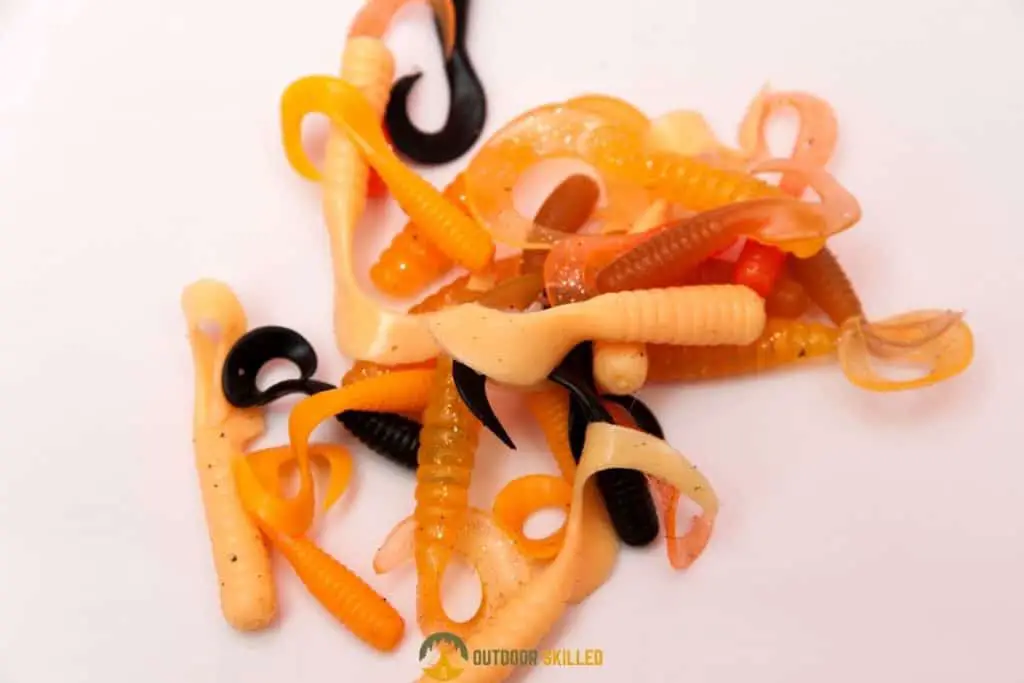
Live worms are top-notch when it comes to night fishing, but what about plastic worms? Are they as effective? The answer is that they’re not as effective as live worms but they can do well too. The variety plastic worms offer to anglers can’t be overlooked.
No one can really detect what’s effective about plastic worms, but they’re deadly to trout. They are ideal for a short unplanned fishing trip because all you have to do is tie up a fast rig and put on one of the plastic worms and go straight into fishing.
In general, you should go for floating plastic worms since you’ll be fishing for trout in the shallow water even if you use a lead shot to pull the bait down into the swim you want the worms themselves to float up off the bed.
Plastic worms sizes of 3 inches (75 mm) work best for trout with hooks a size #10 or so. You don’t need big ones or too small ones. Working along the shores of a fast-moving river is perfect for this form of fishing since live worms are constantly swept out of the river banks and into the swim. Big hungry trout is not far behind and can strike the plastic worm when it moves downstream.
Color is also an important feature provided by plastic worms. It’s better to go for natural colors or the darkest colors you can get as it stands well in the water. For recommendations, I think Berkley PowerBait Honey Worms and Berkley PowerBait Floating Mice Tails are both great options for catching trout on a plastic bait.
You can still add your own enhancement to the plastic worm if it’s not scented. Garlic, cheese, salt, anise oil, olive oil, and fish scent can all be excellent options to add.
Trout Worms VS Nightcrawlers
So, what’s more effective; trout worms or nightcrawlers? Nightcrawlers are more effective when fishing for trout. Trout worms do a good job too but the natural scent and motion of nightcrawlers draw trout quicker than trout worms. You can improve that by adding natural scents to trout worms.
Trout worms is an artificial product by Berkley that imitates worms. Some anglers who are not a fan of live bait use it to catch trout anywhere anytime. No one can deny its effectiveness especially when scented. It’s easier to use and keep.
However, nightcrawlers draw trout from a mile away. Their natural scent especially when chopped on the hook can attract trout anytime. Their natural motion entices trout to turn into a biter as well. They’re harder to keep as freezing nightcrawlers is not practical and you’ll end up having just a bunch of stinky goo in the fridge.
Nightcrawlers can be exceptionally productive at night when trout will rely more on their sense of smell rather than their sight.
Related Questions
What Colors Do Lake Trout Like?
Lake trout like the colors that can imitate their forage. These colors may include white, gold, brown, green, black, orange, yellow, red, and blue. Other unnatural colors such as pink, silver, and chartreuse are also effective. They are all great colors to ensure your lure is visible at depth.
What Hooks To Use For Nightcrawlers?
Use hooks in sizes 4 through 8 as they work best for nightcrawlers. To rig, tie on an Aberdeen or bait holder, thread on your nightcrawler, then pinch a BB-sized split shot onto the line. Cast them in and pull slowly and frequently for better chances
Where to find trout in a lake?
To find trout in a lake try looking for natural ambush points. An ambush point is something on the lake like a large rock pile, a tree, a point, finger, island, cliff, submerged bridge, or a sunken boat. They will use these locations to ambush unsuspecting fry.
Can I Use Dead Worms As Bait?
Yes, you can use dead worms as bait. They can still produce a smell that attracts fish to chase your bait, however, they lose the benefit of producing vibrations in the water. Some fish don’t rely on their sense of smell, instead, they rely on the lateral line to detect vibrations in the water.
Helpful Resources
The Orvis Fly-Fishing Guide by Tom Rosenbauer (You can also check it on Amazon here)
Trout Fishing in America by Richard Brautigan (you can check this book on Amazon here)
If you like this article, please share it or pin it, you can find the share buttons below. We will really appreciate it ❤️

